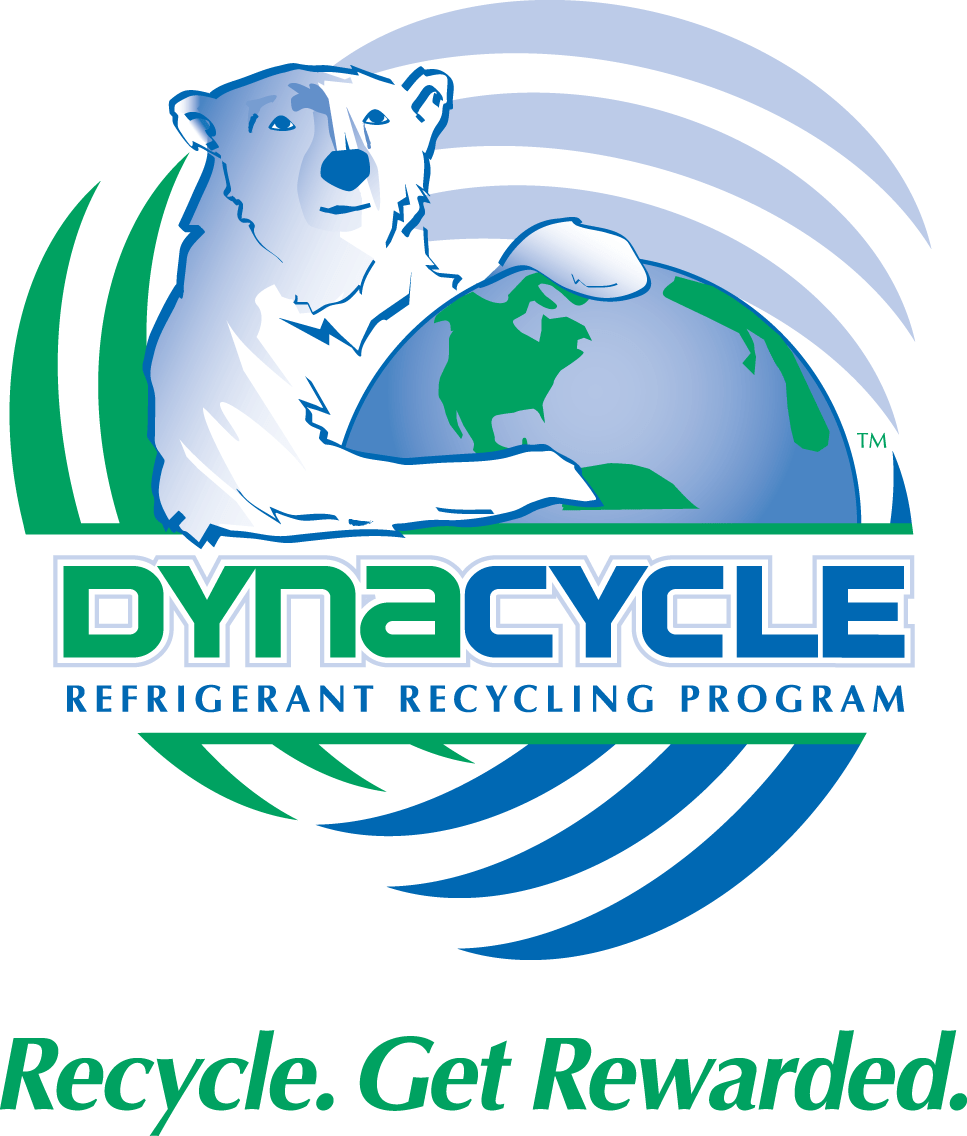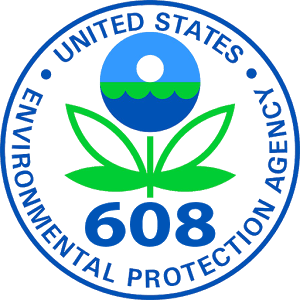
DynaCycle Refrigerant Exchange Program has been around for years, but we recently worked hand-in-hand with our customers to improve upon our existing program and make it easier and more beneficial for distributors and contractors alike. After some fine-tuning we are excited to share that DynaCycle Cylinder Exchange Program is an easy way to get paid for your valuable refrigerants. We are still PAYING for gas! We accept ALL refrigerants.
Quick facts on our program:
- DynaCycle is a cylinder exchange program. Similar to a propane exchange program at your local supermarket or home DIY store, DynaCycle will supply you with state-of-the-art composite recovery cylinders and steel recovery cylinders that you can sell or exchange with your customers. Send filled cylinders back to us, and we’ll send you more empties. After we receive your batch of recovery cylinders, we’ll test, generate EPA compliant documentation, and pay you top dollar for your refrigerants.

2. What we provide: DynaCycle will send the first crate of empty recovery
cylinders to the distributor’s processing location(s).
Contents will include the following-
• 50 lb. Steel Recovery Cylinders
• 30 lb. Steel Recovery Cylinders (optional)
• 50 lb. Composite Recovery Cylinders (optional)
• 125 lb. Steel Recovery Cylinders (optional)
• Cylinder Tags
• HazMat Shipping Labels and Address Labels
• Heavy Duty Shipping Container with Cardboard Cover
Your DynaCycle representative will work with you to determine the correct product mix for your initial shipment. You may choose to set up processing centers at individual locations, distribution hubs or a combination of both. When choosing where to establish DynaCycle processing centers, consider the time it will take to receive between 18 and 24 filled refrigerant recovery cylinders in those chosen locations.
3. The exchange: Your customer may exchange a filled DOT 4BA or 4BW recovery cylinder for an empty cylinder of similar type and capacity. There is no processing fee associated with a cylinder exchange. DynaCycle offers both composite and steel cylinders for resale so that distributors can sell an empty exchange cylinder to customers that do not have their own recovery cylinder to exchange.
4. Tagging: Filled recovery cylinders are tagged and placed in the shipping container that was provided by DynaCycle. Distributor personnel will ensure that the DynaCycle cylinder tag is completely filled in and securely attached to the customer’s recovery cylinder.
5. How shipping works: When the distributor has packed the shipping container full (approximately 18 to 28 filled 30 lb and 50 lb recovery cylinders), DynaCycle should be contacted to initiate the shipping process and pickup schedule. DynaCycle will provide you with a pickup date, Bill of Lading and additional packing and shipping instructions as necessary. Similarly, DynaCycle will send a container of corresponding, empty recovery cylinders and tags to replenish the distributor’s processing center.
6. Reporting: Within about ten business days of DynaCycle receiving a shipment of filled recovery cylinders, the distributor will receive a payment report and EPA Compliant receiving report (pdf format) for each technician customer.
7. Payment: DynaCycle will issue payments in the form of check or credit, whichever the distributor prefers. Shipments received by the 20th day of the month will be issued payment at the end of the same month. Shipments received after the 20th day of the month will be paid at the end of the following month. Payments will always be issued less than 45 days from the receipt of a shipment of recovered refrigerant.
DynaCycle recommends that distributors share a portion of the program proceeds with their contractor- technician customers in the form of a store credit. In our experience, this policy builds momentum in the program and increases customer loyalty. The contractor’s pay rate will be left to the discretion and direction of the wholesale distributor. Issuing store credit instead of cash or check allows the distributor to retain some margin dollars on the sale of product.
Why DynaCycle?
• Get Paid for your Valuable Recovered Refrigerant
• Build Customer Loyalty and Increase Sales
• EPA Compliant Reports Supplied at No Charge
• No Shipping Costs
• No Obligation to Purchase Refrigerant
• No Per-Cylinder Pump Down Fees
• Accepts ALL refrigerants
• Flexible programs
• No annual requirements
For more information on the DynaCycle Refrigerant Exchange Program please call (717) 249-0157.



